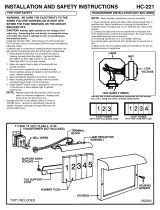
-- 2 --conte
LIST OF CONTENTS Page
READ THIS FIRST 3................................................................
COMPONENT DESCRIPTION 4......................................................
CONNECTION DIAGRAM LA W 420/520; 400--415 V 6.................................
CONNECTION DIAGRAM LA W 420/520; 230--500 V 8.................................
DESCRIPTION OF OPERATION 11....................................................
1 Power supply, circuit board AP1 11................................................
2 Display output 12...............................................................
3 Machine type / Test input 13......................................................
4 Fixed / controlled firing angle 13..................................................
5 Synchronising 14...............................................................
6 Thermal overload switch 14......................................................
7 Arc voltage input 15.............................................................
8 Shunt input 16..................................................................
9 Voltage reference 16............................................................
10 Crater filling 17.................................................................
11 Start/Stop 17..................................................................
12 Thyristor circuits 18.............................................................
13 Processor 19...................................................................
14 Presetting 20...................................................................
15 Pulse welding 21...............................................................
Component positions, circuit board AP1 22............................................
SUPPRESSION CIRCUIT BOARD AP2 23.............................................
TEST ROUTINE 24...................................................................
FITTING INSTRUCTIONS, THYRISTOR MODULES LAW 520 26.........................
FITTING INSTRUCTIONS, THYRISTOR MODULES LAW 420 27.........................
LOAD CHARACTERISTIC 28.........................................................
TECHNICAL DATA 29................................................................
PRIMARY CONNECTIONS LA W 420/520 230 -- 500 V 30................................
CONTROL PANEL AND CONNECTIONS 31............................................
MAINTENANCE 31...................................................................
LIFTING INSTRUCTION 31...........................................................
ACCESSORIES 32...................................................................
SPARE PARTS LIST 33..............................................................
NOTES 44..........................................................................
Rights reserved to alter specifications without notice.




















